Key Takeaways
- AC freezing occurs when insufficient warm air flows over the evaporator coil, causing refrigerant to freeze inside the system
- Common causes include dirty air filters, low refrigerant levels, malfunctioning blower fans, and blocked vents or ductwork.
- Immediate fixes include turning off the AC while keeping the fan running, replacing dirty filters, and checking for any obstacles or blockages vents.
- Regular maintenance, including filter changes every 1-3 months and annual professional inspections, prevents most freezing issues.
- Persistent freezing after basic troubleshooting requires a professional HVAC diagnosis to avoid costly compressor damage.
Nothing’s more frustrating than your air conditioning system failing when you need cool air the most. If your AC keeps freezing up, you’re dealing with one of the most common yet perplexing HVAC problems that homeowners face during hot weather. While it seems counterintuitive that an air conditioner would freeze when it’s sweltering outside, this issue affects thousands of households every summer and can lead to costly repairs if left unaddressed.
The good news is that most cases of ac freezing have straightforward solutions that don’t require expensive professional intervention. Understanding why air conditioners freeze and knowing how to respond quickly can save you from uncomfortable nights and hefty repair bills. This comprehensive guide will walk you through everything you need to know about frozen AC units, from identifying the warning signs to implementing long-term prevention strategies.
Signs Your AC Is Freezing Up
Recognizing the early warning signs of a frozen air conditioner can help you address the problem before it causes significant damage to your cooling system. The most obvious indicator is visible ice buildup on refrigerant lines outside your home, which appears as a thick layer of frost or ice coating the copper pipes connecting to your outdoor condenser unit.
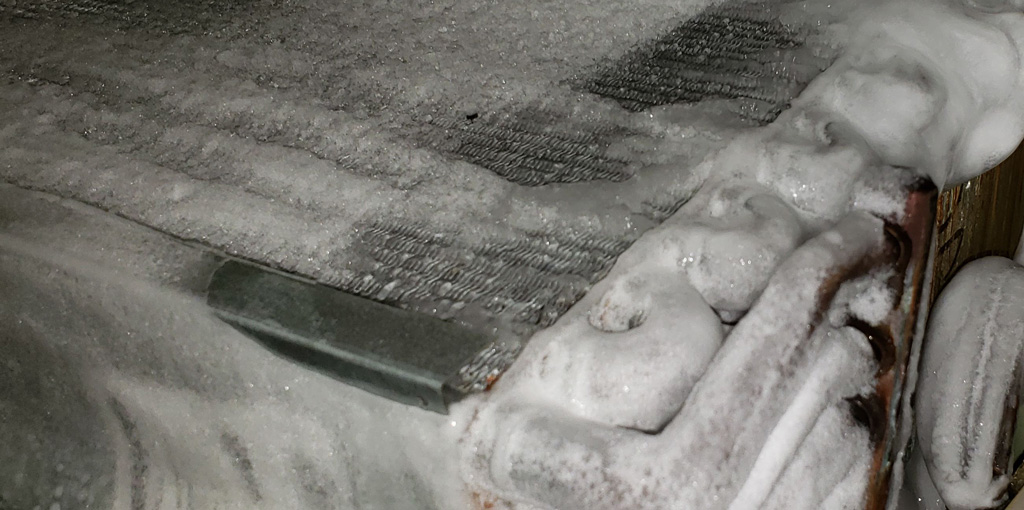
Inside your home, ice formation on the evaporator coil represents another clear sign of freezing, though this requires removing access panels to inspect. When your HVAC system freezes, you’ll notice dramatically reduced cooling performance with warm air blowing from vents instead of the cold air you expect from a properly functioning air conditioning system.
Unusual sounds from your AC unit during operation can also signal freezing problems. Listen for hissing or bubbling noises, which often indicate refrigerant issues or ice melting within the system. Additionally, water pooling around the indoor unit typically indicates a recent freeze-up as ice melts and overwhelms the condensate drain lines system.
Other warning signs include your AC system cycling on and off more frequently than normal, higher than usual energy bill costs due to reduced efficiency, and excess moisture or humidity in your home despite the air conditioner running continuously.
Why AC Units Freeze Even in Hot Weather
Understanding why air conditioners freeze during hot weather requires grasping the basic principle behind how these cooling systems work. Your air conditioning system doesn’t actually inject cool air into your home. Instead, it removes heat from indoor air through a continuous cycle of heat absorption and rejection.
The evaporator coil inside your air conditioning system serves as the heart of this heat exchange process. Refrigerant flowing through these coils absorbs heat from warm air that the blower fan circulates over the coil’s surface. When this process works correctly, the coils remain cold enough to cool incoming air but warm enough to prevent ice formation.
Problems arise when insufficient warm air flows over the evaporator coil, causing its temperature to drop below 32°F. The refrigerant continues circulating through the system, but without adequate heat absorption from passing air, the coil becomes cold enough to freeze any moisture present. This creates a downward spiral where ice buildup further restricts airflow, making the freezing problem progressively worse.
The Joule Thomson effect also plays a role in this process. When refrigerant pressure drops due to leaks or restrictions, the rapid expansion causes additional cooling that can push coil temperatures well below freezing. This explains why low refrigerant levels frequently contribute to frozen air conditioning units even when outdoor temperatures soar above 90°F.
Common Causes of AC Freezing
Multiple factors can disrupt the delicate balance your air conditioning system requires to function properly. Understanding these common causes helps you identify which specific issue affects your AC unit and determine whether you can handle the repair yourself or need professional HVAC assistance.
Airflow restrictions represent the most frequent culprit behind AC freezing problems, accounting for approximately 80% of freeze-up incidents according to industry data. When your HVAC equipment cannot circulate sufficient warm air over the evaporator coils, those coils become cold enough to freeze condensation and moisture from the surrounding air.
Mechanical failures within the cooling system create another category of freezing causes. These issues typically require professional diagnosis and AC repair, as they involve complex components like the blower fan, refrigerant system, and electrical controls that keep your air conditioner functioning properly.
Dirty or Clogged Air Filters
Dirty air filters rank as the single most common cause of air conditioner freezing, creating a restriction that prevents adequate warm air from reaching the evaporator coil. When filters become clogged with dust, pet hair, and debris, they act like a barrier that dramatically reduces the system’s airflow.
Your AC system depends on consistent air movement to maintain proper heat exchange. A dirty air filter forces the blower fan to work harder while moving less air, creating a situation where the evaporator coils cannot absorb enough heat to prevent freezing. This problem compounds over time as restricted airflow allows more moisture to condense and freeze on already-cold coil surfaces.
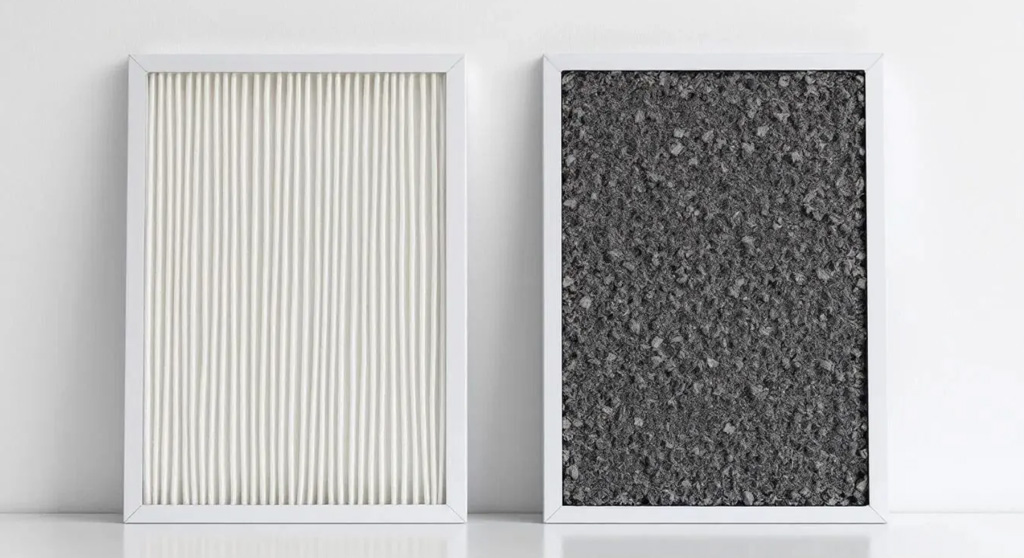
Replace air filters every 1-3 months, depending on your household’s specific conditions. Homes with pets, smokers, or family members with allergies may require monthly filter changes, while households in cleaner environments might manage with quarterly replacements. Check your filter monthly during the peak summer cooling season to ensure it hasn’t become prematurely clogged.
Using filters with excessively high MERV ratings can also restrict airflow even when clean. While higher-rated filters capture more particles, they can impede air movement if your HVAC system wasn’t designed to handle that level of filtration resistance.
Low Refrigerant Levels
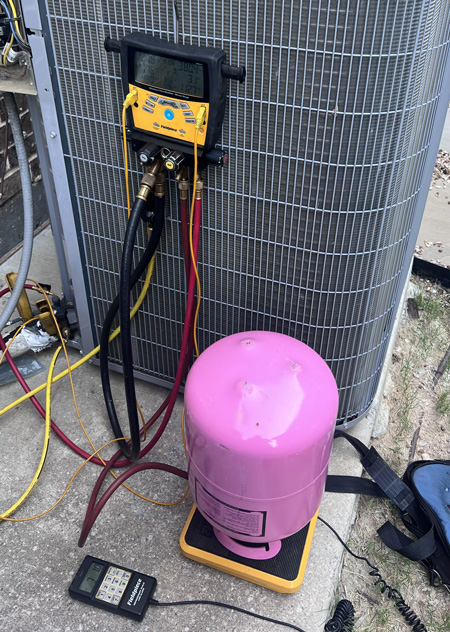
Low refrigerant levels create conditions that almost guarantee your AC unit will freeze, regardless of outdoor temperatures or season. Refrigerant serves as the medium that absorbs heat from indoor air and transfers it outside, making adequate levels essential for proper system operation.
When refrigerant levels drop due to leaks in the system, the remaining refrigerant expands more rapidly as it passes through the evaporator coil. This expansion, combined with reduced system pressure, causes coil temperatures to plummet well below normal operating ranges. Ice forms on refrigerant lines and the evaporator coil as moisture freezes on these super-cooled surfaces.
Unlike other mechanical systems, air conditioners don’t consume refrigerant during normal operation. Low refrigerant levels always indicate a leak somewhere in the system, whether in the coils, connections, or refrigerant lines. These leaks require professional detection and AC repair, as refrigerants can pose health hazards and require proper handling and disposal.
Professional HVAC technicians use specialized equipment to locate refrigerant leaks, repair damaged components, and refill the system to manufacturer specifications. Attempting DIY refrigerant repairs violates environmental regulations in many areas and can create safety risks for untrained individuals.
Malfunctioning Blower Fan
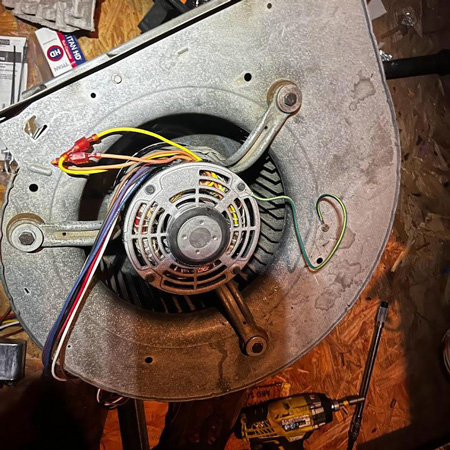
Your air conditioner’s blower fan plays a critical role in preventing freeze-ups by continuously circulating warm air over the evaporator coil. When this fan malfunctions, operates at reduced speed, or fails completely, inadequate airflow creates ideal conditions for ice formation.
A faulty blower fan can result from several issues, including worn motor bearings, electrical problems, or damaged fan blades. Low voltage problems can cause the fan to run slowly or intermittently, reducing airflow enough to allow freezing even if the fan appears to be operating normally.
Damaged blower fan motors often produce unusual sounds before failing completely. Listen for grinding, squealing, or intermittent operation that might indicate impending fan failure. Some motors may run but at significantly reduced speeds, creating airflow problems that lead to frozen air conditioner situations.
Faulty blower fan issues typically require professional diagnosis and repair, as they involve electrical components and precise motor specifications. A trained professional can determine whether the problem requires motor replacement, electrical repairs, or adjustments to restore proper airflow through your cooling system.
Obstructed Vents and Ductwork
Closed or blocked supply and return vents restrict air circulation throughout your home, creating conditions that can cause your AC system to freeze. When too many vents are closed or blocked by furniture, curtains, or debris, your air conditioning system cannot move sufficient air to maintain proper heat exchange at the evaporator coil.
Many homeowners mistakenly believe that closing vents in unused rooms saves energy, but this practice actually reduces system efficiency and increases freezing risk. Your air conditioning system is designed to handle a specific volume of airflow, and restricting that flow forces the system to work harder while providing less effective cooling.
Furniture placement can inadvertently block proper airflow even when vents remain open. Couches, curtains, or storage items placed directly over supply or return vents create restrictions that reduce overall system performance. Additionally, damaged or collapsed ductwork can prevent proper air movement even when all visible vents remain clear.
Keep at least 80% of your home’s vents open to ensure adequate airflow through the system. Regularly inspect vents for obstructions and maintain clear pathways for air movement. If certain rooms consistently feel too warm or cool, consider professional duct balancing rather than closing vents to address comfort issues.
Clogged Condensate Drain Line
A clogged condensate drain line creates conditions that promote freezing by allowing excess moisture to accumulate near the evaporator coil. As your air conditioner removes humidity from indoor air, that moisture condenses on the coil surface and should drain away through dedicated condensate lines.
When these drain lines become blocked with algae, debris, or biological growth, water backs up and pools around the evaporator coil. This excess moisture freezes when coil temperatures drop, creating ice buildup that further restricts airflow and worsens the freezing problem.
You can often clear minor condensate drain line blockages using a wet/dry vacuum to suction debris from the drain opening. For more persistent clogs, a mixture of water and vinegar flushed through the line can help dissolve biological growth and restore proper drainage.
Regular condensate drain maintenance prevents water-related freezing issues and protects your home from potential water damage. Inspect condensate drain lines monthly during the cooling season and address any signs of blockage or slow drainage immediately.
Dirty Evaporator Coils
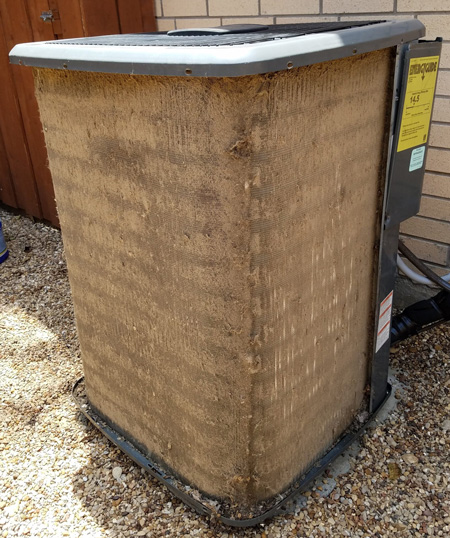
Dirty evaporator coils cannot transfer heat efficiently, leading to freezing even when other system components function normally. Dust, pet hair, and biological growth accumulate on coil surfaces over time, creating an insulating layer that prevents proper heat exchange between the refrigerant and passing air.
When evaporator coils become dirty, they cannot absorb heat from indoor air effectively, causing coil temperatures to drop below freezing. The accumulated debris also restricts airflow around the coils, compounding the freezing problem and reducing overall system efficiency.
Professional coil cleaning requires specialized equipment and cleaning solutions to safely remove debris without damaging delicate coil fins. Attempting to clean coils yourself can bend or damage these fins, reducing system efficiency and potentially creating additional problems.
Annual professional maintenance should include thorough evaporator coil cleaning along with inspection of other critical system components. Clean coils improve system efficiency, prevent freeze-ups, and extend the life of your hvac equipment.
How to Fix a Frozen AC Unit
When you discover your AC unit has frozen, taking immediate action can prevent additional damage to your cooling system while beginning the thawing process. However, safety should remain your top priority when dealing with a frozen air conditioner, as attempting to force ice removal can damage expensive components.
Never attempt to chip, scrape, or melt ice off frozen components using tools or hot water. These methods can crack coils, damage refrigerant lines, or create electrical hazards. Instead, follow a systematic approach that allows natural thawing while addressing the underlying cause of the freezing problem.
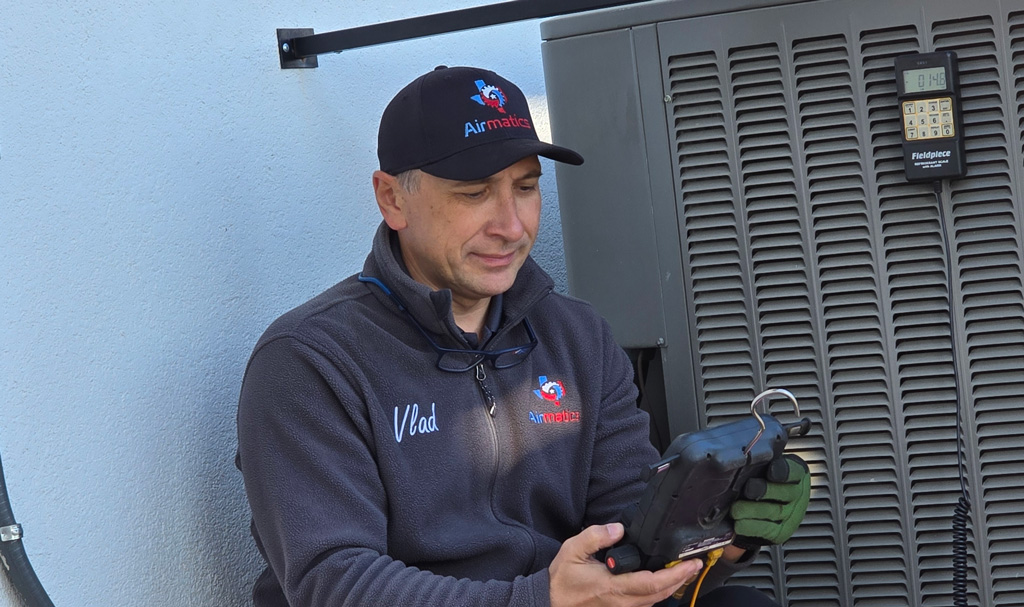
The troubleshooting process involves several steps that most homeowners can safely perform, though persistent problems require professional HVAC diagnosis. Document any patterns you notice, such as specific times when freezing occurs or conditions that seem to trigger the problem, as this information helps technicians identify root causes.
Turn Off AC and Run Fan Only
Your first step should be switching your thermostat to “off” while setting the fan to “on” to begin circulating warm air over the frozen components. This approach accelerates the thawing process by using room temperature air to melt ice buildup naturally and safely.
The fan-only operation helps prevent further damage while encouraging faster melting than simply turning the entire system off. Warm indoor air circulation can reduce thawing time significantly, though complete ice removal may still take 8-24 hours, depending on the severity of the freeze-up.
During the thawing process, place towels or containers around the indoor unit to catch melting ice and prevent water damage to surrounding areas. Monitor the area periodically to ensure proper drainage and replace saturated towels as needed.
Resist the temptation to restart the cooling operation before all ice has completely melted. Running the air conditioner with any remaining ice can damage the compressor and other expensive components, turning a relatively simple fix into a costly HVAC repair.
Check and Replace Air Filter
While your system thaws, inspect the air filter for dirt, dust, and debris accumulation that might have contributed to the freezing problem. A visibly dirty filter likely played a significant role in creating the airflow restrictions that led to your frozen AC unit.
Replace the filter with a new one of the correct size and appropriate MERV rating for your system. Ensure the new filter fits properly in its housing and faces the correct direction, as indicated by airflow arrows printed on the filter frame.
If you use washable filters, clean them thoroughly with water and mild soap, then allow complete drying before reinstallation. Wet filters can promote mold growth and create additional airflow restrictions that contribute to future freezing problems.
Keep spare filters on hand to enable quick replacement when needed. Having the correct size and type readily available ensures you can address filter problems immediately rather than waiting for a trip to the hardware store.
Inspect Vents and Airflow
Walk through your home to check that all supply and return vents remain open and unobstructed by furniture, curtains, or other objects. Even partially blocked vents can contribute to the airflow restrictions that cause AC freezing.
Remove any items blocking vents and ensure adequate clearance around each opening for proper air circulation. Pay particular attention to return vents, which are often larger and may be more easily obstructed by furniture placement or storage items.
Check the outdoor condenser unit for debris accumulation around the exterior coils and fan area. Remove leaves, grass clippings, or other material that might restrict airflow through the outdoor heat exchanger, though avoid using water to clean electrical components.
Ensure that landscaping or stored items haven’t reduced clearance around the outdoor unit. Most manufacturers recommend maintaining at least two feet of clear space around the condenser for proper operation and servicing access.
Restart System and Monitor
After complete thawing and addressing obvious airflow restrictions, you can attempt to restart your air conditioning system. Begin with a normal cooling setting and monitor system performance closely for the first few hours of operation.
Watch for signs of immediate re-freezing, such as reduced cooling performance, unusual sounds, or visible ice formation on accessible components. If any freezing symptoms return quickly, turn the system off immediately and contact a professional hvac technician for diagnosis.
Successful restart and normal operation for several hours suggests that your troubleshooting efforts addressed the underlying problem. However, continue monitoring system performance over the following days to ensure the freezing issue doesn’t recur.
Document the entire incident, including what you found during inspection and what steps resolved the problem. This information proves valuable if professional service becomes necessary and helps you recognize similar problems in the future.
Preventing Future AC Freeze-Ups
Preventing AC freezing requires consistent attention to system maintenance and operational practices that support proper airflow and heat exchange.
Most freeze-up incidents can be avoided through:
- regular filter changes,
- annual professional maintenance,
- and awareness of system limitations.
Developing a preventive maintenance routine costs far less than repairing damage caused by repeated freezing incidents. Simple tasks like monthly filter inspections and seasonal system checks can identify potential problems before they lead to frozen air conditioner situations.
The investment in prevention pays dividends through improved system efficiency, extended equipment life, and fewer emergency AC repair calls during the hottest parts of summer when HVAC professionals are busiest and most expensive.
Regular Filter Maintenance
Establish a consistent schedule for checking and replacing air filters based on your household’s specific conditions and usage patterns. Homes with pets, smokers, or family members with allergies require more frequent attention than houses with minimal dust and debris sources.
Change filters every 30-90 days as a general rule, but inspect them monthly during peak cooling season to identify premature clogging. Environmental factors like construction activity, wildfires, or seasonal pollen can accelerate filter contamination beyond normal schedules.
Set calendar reminders or use smartphone apps to track filter replacement dates and ensure consistency. Many homeowners forget this critical maintenance task until their ac system begins showing problems, making automated reminders valuable for preventing issues.
Keep spare filters of the correct size and MERV rating readily available for immediate replacement when needed. Buying filters in bulk often reduces per-unit costs while ensuring you’re never caught without a replacement when one becomes necessary.
Annual Professional Maintenance
Schedule comprehensive AC system inspections each spring before peak cooling season begins to identify and address potential freeze-causing issues. Professional maintenance goes far beyond tasks homeowners can safely perform, including refrigerant level checks, electrical component testing, and thorough system cleaning.
During annual maintenance visits, HVAC professionals inspect evaporator and condenser coils, test blower fan operation, verify proper refrigerant levels, and check electrical connections throughout the system. They can identify developing problems before they cause system failures or freeze-ups.
Ductwork inspection and balancing ensure proper airflow distribution throughout your home, addressing issues that might not be apparent during normal operation. Professional technicians can also optimize system settings for maximum efficiency and reliability.
Early detection and repair of potential freeze-causing issues during scheduled maintenance costs significantly less than emergency repairs when your cooling system fails during hot weather. Many hvac contractors offer maintenance agreements that include priority service and discounted repair rates.
Proper Thermostat Settings
Avoid setting your thermostat below 68°F, as excessively low temperature settings can cause evaporator coils to become cold enough to freeze even when other system components function normally. Very low settings force your air conditioner to run continuously, increasing the risk of freezing under marginal conditions.
Use programmable or smart thermostats to maintain consistent temperature control and avoid dramatic temperature changes that stress your cooling system. Gradual adjustments allow your HVAC system to respond efficiently without creating conditions that promote freezing.
Consider installing zoning systems in larger homes with varying cooling needs throughout different areas. Proper zoning reduces the temptation to close vents in unused rooms while providing customized comfort control for different living spaces.
Smart thermostats can provide diagnostic information about system operation and alert you to potential problems before they cause complete failures. Many models track runtime, cycle frequency, and other metrics that help identify developing issues.
When to Call an HVAC Professional
While many AC freezing incidents respond to basic homeowner troubleshooting, certain situations require professional diagnosis and repair to prevent costly damage or safety hazards. Recognizing when DIY efforts have reached their limits can save money and prevent additional problems.
Refrigerant-related issues always require professional attention due to environmental regulations, safety concerns, and the specialized equipment needed for proper diagnosis and repair. Attempting DIY refrigerant work can violate local laws while creating health and safety risks for untrained individuals.
Electrical problems within your HVAC system pose serious safety hazards that require trained professional intervention. Signs of electrical issues include frequent circuit breaker trips, burning odors, or visible damage to wiring or electrical components.
Persistent Freezing Issues
If your AC system continues freezing after you’ve addressed obvious airflow restrictions and replaced dirty filters, underlying mechanical or refrigerant problems likely require professional diagnosis. Repeated freeze-ups indicate systemic issues that basic troubleshooting cannot resolve.
Multiple freeze-ups occurring within short time periods suggest problems with refrigerant levels, electrical components, or system sizing that need expert evaluation. Continuing to operate a system with recurring freezing can damage expensive components like the compressor.
Ice formation accompanied by unusual sounds, odors, or visible damage to system components indicates problems beyond normal homeowner maintenance capabilities. These symptoms often point to refrigerant leaks, electrical failures, or mechanical damage requiring professional repair.
Systems that fail to cool properly even when not frozen may have multiple issues affecting performance and reliability. Professional diagnosis can identify all contributing factors and recommend comprehensive solutions rather than temporary fixes.
Refrigerant and Mechanical Problems
Suspected refrigerant leaks require professional leak detection equipment and proper repair techniques to locate and fix the source of the problem. Low refrigerant levels always indicate leaks, as these systems don’t consume refrigerant during normal operation.
Blower fan motor issues or electrical problems need professional diagnosis to determine whether repair or replacement provides the most cost-effective solution. These components involve electrical work that requires proper training and safety precautions.
Damaged evaporator or condenser coils may need repair or replacement depending on the extent of the damage and age of the system. Professional assessment can determine whether repair remains economically viable or if system replacement makes more sense.
Compressor problems represent some of the most expensive hvac repairs and often indicate that replacement of the entire system provides better long-term value. Professional evaluation can help you make informed decisions about major repair investments versus system replacement.
FAQ
Nighttime freezing typically occurs because lower outdoor temperatures combined with continuous AC operation can cause evaporator coil temperatures to drop below freezing, especially when airflow is already restricted by dirty filters or other issues. The reduced heat load at night means less warm air passes over the coils, making them more susceptible to freezing even with minor airflow restrictions.
Never pour hot water on frozen AC components as thermal shock can crack evaporator coils, damage refrigerant lines, or create electrical hazards. The sudden temperature change can cause metal components to expand rapidly and crack. Instead, allow natural thawing with fan circulation, which typically takes 8-24 hours but prevents expensive damage.
Wait until all ice has completely melted from both visible and internal components, typically 8-24 hours depending on the severity of the freeze-up. Then address the underlying cause (replace filters, clear vents, etc.) before restarting the system. Turning the AC back on with any remaining ice can damage the compressor and other expensive components.
Repair costs vary dramatically depending on the root cause. Simple issues like dirty filter replacement cost under $20, while refrigerant leaks can cost $300-800 to repair. More serious problems like damaged evaporator coils or compressor failure can range from $1,500-3,000 or more. Prevention through regular maintenance costs far less than emergency repairs.
Continuous operation alone doesn’t cause freezing in a properly functioning system. However, running an AC with existing problems like dirty filters, low refrigerant, or blocked vents increases freezing likelihood during extended use. If your AC runs constantly but doesn’t cool effectively, address underlying issues rather than limiting runtime, as the problem will likely worsen.